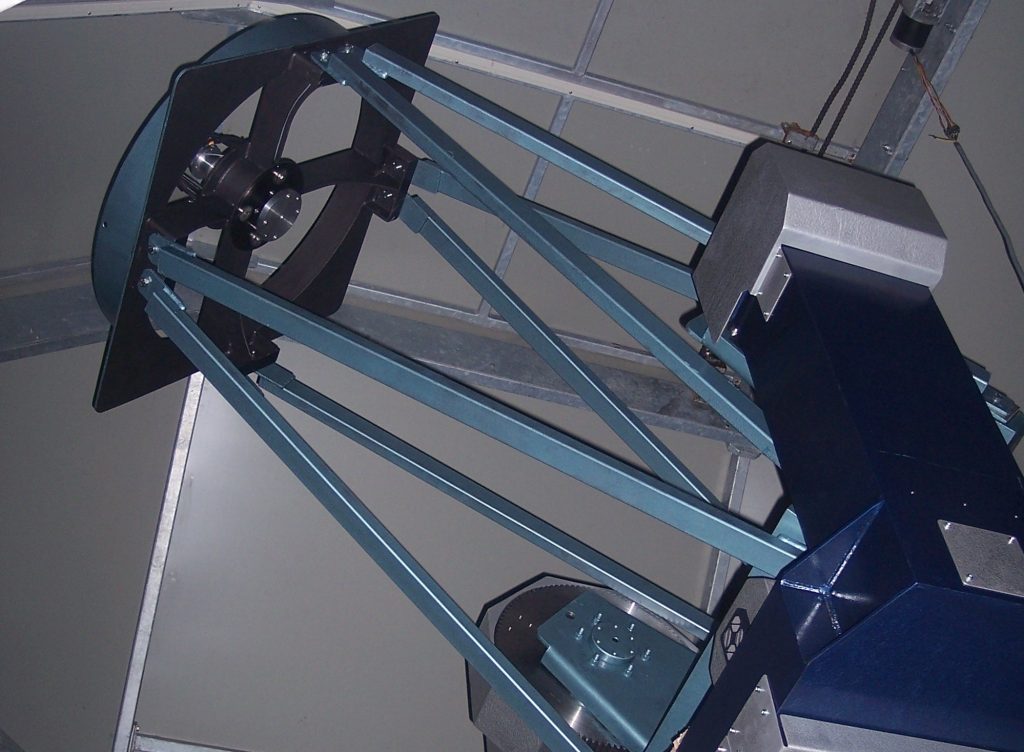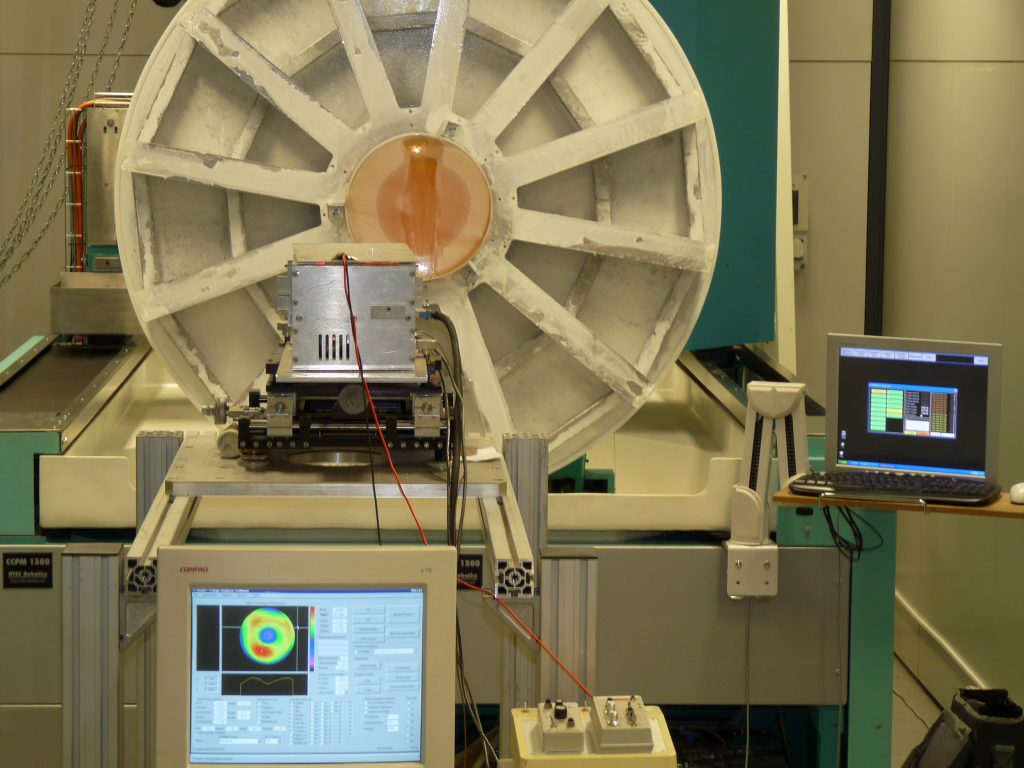DSS: Debris Spectroscopic Survey

Autore: Dario Mancini (Osservatorio Astrofisico di Torino)
The “Debris Spectroscopic Survey” (DSS) marks a significant advancement in space debris observation, using spectroscopy to determine the composition or characteristics of debris and, consequently, their hazard level. Spectroscopy of objects in geostationary and high elliptical orbits is particularly complex, requiring advanced technological developments and considerable experience in system design, development and management.
The program centers around two advanced robotic telescopes, the CRT (Castelmauro Robotic Telescope) and the SVIRT (Spectroscopic Visible & Infrared Robotic Telescope), designed and developed by Innova Robotics. These instruments represent the state of the art in optics, telescopes, instrumentation, and robotics. The CRT, already operational, is intended to be optically optimized to specialize in debris observation capabilities. Using innovative pointing and tracking technologies, the CRT acts as a sentinel, confirming the coordinates of debris that are then analyzed by SVIRT for validation and to initiate spectroscopic analysis.

Fig. 1) The integration phase of the CRT telescope at the observatory – Courtesy of Dario Mancini
The installation site for SVIRT will be selected based on the analysis of sites evaluated using Innova’s autonomous robotic tracker, SunTrack, which independently assesses atmospheric conditions by measuring direct and diffuse solar radiation and night seeing, among numerous other parameters critical for in-depth site characterization. This tool is crucial for choosing sites based on optimal observation periods and conditions.
The interaction between CRT and SVIRT, through coordinated observations, significantly enhances the response to the risks that space debris poses to orbital infrastructures. The program not only leverages advanced robotic systems but also extensively utilizes artificial intelligence techniques that Innova has been developing since the early 2000s.
The decision to initially use two separate telescopes facilitates the calibration of control systems and optics during the development phase. The availability of telescopes at an easily accessible site allows for agile experimentation, followed by relocating the telescopes to their respective sites. Specifically, SVIRT will be positioned at a high-altitude location due to its operations in the near-infrared.

Fig. 2) The interferometric analysis during the polishing phase of the primary mirror of the CRT Telescope – Courtesy of Dario Mancini
In the visible spectrum, materials can be identified based on their reflection of sunlight, while infrared spectrograph are useful for identifying materials based on their heat or thermal emission. The combination of this information increases the accuracy of the detection factor. These joint efforts enhance the reliability of the measurements and analyses performed.
The main challenges of the project include managing atmospheric lighting and airglow, which can hinder spectroscopic observations. To overcome these obstacles, it is planned to schedule observations during periods of minimal airglow and to use advanced spectral filters and signal processing techniques to differentiate between the debris spectrum and background noise.
In summary, integrating these two robotic telescopes into a unified system represents an innovative frontier in space debris monitoring. The DSS aims not only to fill existing gaps in monitoring techniques but also to offer new perspectives for managing the safety of orbital operations.
This text is extracted from a publication courtesy of Prof. Ing. Dario Mancini. The project is progressing, with the completion of the SVIRT project and spectrograph planned by 2026 and realization by 2027, funded by private sources and coordinated by CSI, Culture Development and Innovation and Innova Robotics.
Ultimo aggiornamento: 8 Luglio 2024, 16:52
 INAF-GREEN
INAF-GREEN